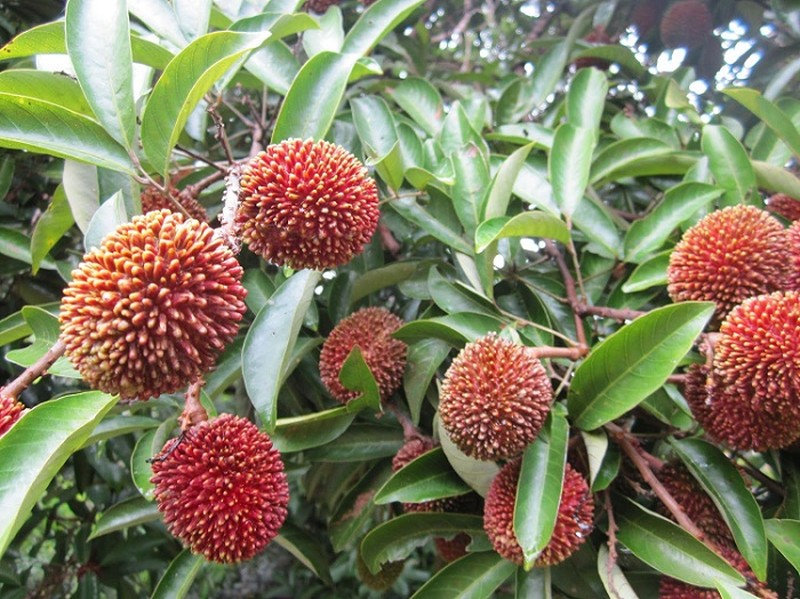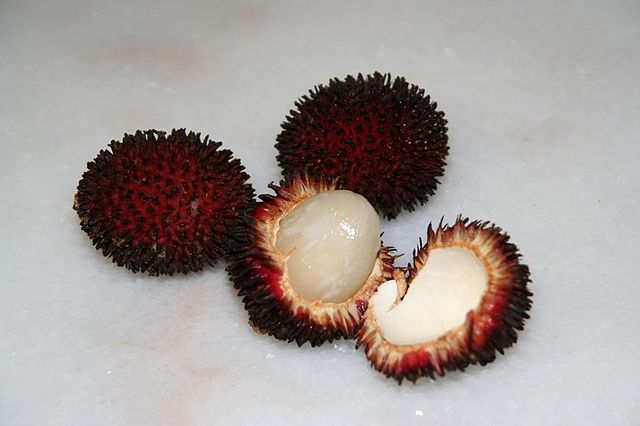Pulasan

Nephelium ramboutan-ake, the pulasan, is a tropical fruit in the soapberry family Sapindaceae. It is closely related to the rambutan and sometimes confused with it. Other related soapberry family fruits include lychee and longan. It has its origin in Peninsular Malaysia, and its name comes from the word “Pulas” (twist) in Malay. Also, it is an excellent Thai dessert loved by many tourists. Sweetness is the primary flavor, and it is sweeter than Rambutan. It is famous in Kerala of India.
When ripe, pulasan have a thick, leathery rind that is often dark red or occasionally yellow and grows to be approximately 5 cm broad and 6 cm long. The fruit most closely resembles a rambutan because of its conical shape and skin, which is coated in short, thick, stubby spines. The white, juicy, and delicious flesh of the pasan, which makes about 25–30% of the fruit's weight, is revealed when the fruit is opened by twisting it with both hands in a manner most similar to a lychee. Fruits from the pulasan tree are harvested twice a year, in the spring and the fall.











